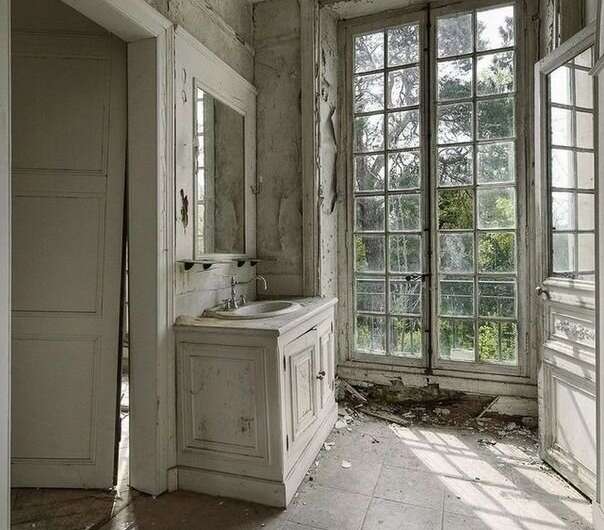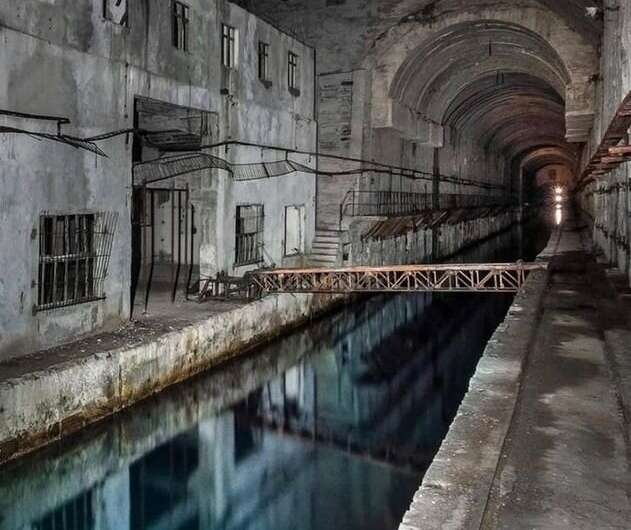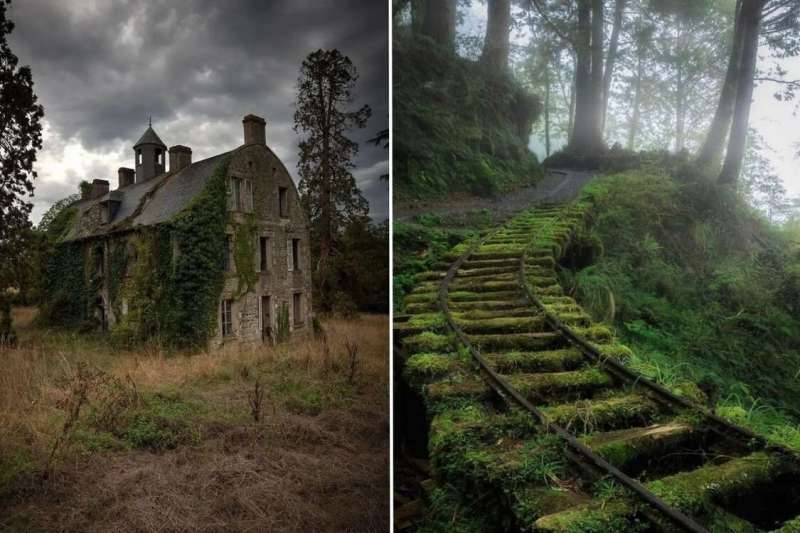This article has been reviewed according to Science X's editorial process and policies. Editors have highlighted the following attributes while ensuring the content's credibility:
fact-checked
trusted source
proofread
Picturing ruins: More than just a morbid fascination

Click on hashtag #abandoned on Instagram and you'll find more than 9 million posts. For hashtag #urbex, there are more than 11 million. It's a seemingly endless supply of haunting photographs of ruins—abandoned houses in the middle of nowhere, crumbling industrial complexes overrun with weeds, ancient graveyards submerged under water.
Julianne Pilon studied the "ruin porn" phenomenon for her master's thesis in communications under the supervision of Line Grenier, a professor in UdeM's Department of Communications, Faculty of Arts and Science. We spoke to Pilon to find out more.
First, what exactly is 'ruin porn?'
The term ruin porn is certainly intriguing and grabs our attention with its provocative and suggestive name. It was coined in the 1980s, when tourists were flocking to the streets of Detroit to photograph the post-industrial remains of a once-great American city.
Today, "ruin porn" is used to describe digital manipulation of photographs to give them a ghostly, unearthly and mysterious quality that fetishizes devastation. These images of post-apocalyptic landscapes become artifacts that bear witness to the effects of deindustrialization.
However, ruin porn obscures the harsh socioeconomic reality of the people behind these scenes of decay and destruction. The photographs are decontextualized, presented without detailed description after they have been altered through the use of techniques such as filters. There is a strong emphasis on misery and sensationalism.

Does ruin porn share a common aesthetic?
Yes, very much so. We see many textures in these photographs, and much perspective and depth. They show dark spaces illuminated by natural light filtering in. There are reflections in the windows, or a glow.
There are often many natural elements inside the man-made structures. We see vegetation growing wild, water and mold, heightening the sense of decrepitude.
We also see that the more abandoned a site is, the more permeable it is to the outdoors. The passage of time, the ravages of weather, the crumbling of barriers between inside and out all become more and more evident. The demarcation between inside and out becomes blurred, as if the absence of humans has opened up these abandoned spaces to nature, which is now reclaiming its dominion.
The appeal of ruin porn also derives from the way these images make us feel. Visual qualities like heightened texture and dim lighting evoke deep and intense emotions. These photographs create an atmosphere that makes us feel sad and nostalgic.
How do you explain the success of this rather gloomy content on Instagram?
An attraction for the post-apocalyptic is nothing new—we find it in paintings, literature, video games, even TV series. The obsession with devastation, with the end of the world, and above all with the finiteness of human existence isn't unique to ruin porn. Some of our greatest writers have pondered this finiteness and our fear of leaving no mark on the world.

I think this fascination and questioning about our own finitude is what drives our attraction to ruin porn. What will remain after we are gone? Of course structures will remain, but for how long? We just don't know. It's very interesting to see these abandoned spaces become more and more permeable to nature over time, to see vegetation creeping in and the boundaries separating inside from out gradually crumbling, leaving fewer and fewer traces of our time here on Earth.
When looking at a decontextualized image of an abandoned space, we ask ourselves: what was this? What happened here? Why was it abandoned? Is this the future? Is this what's going to happen to us? What will be left when we are gone?
Ruin porn also makes us ask fundamental questions about production and (over)consumption, about what we leave behind and its significance.
What about the criticisms leveled at ruin porn?
Certainly the lack of contextualization means we don't get to hear the stories of the people behind these images.
At the same time, these photographs encourage the preservation of abandoned spaces. Behind all those millions of photographs of ruins lies a large community of urban explorers working to have these places protected.
There is also renewed interest in revitalizing these spaces. This doesn't necessarily mean restoring them to their original state but rather envisioning new uses for them. In some cases, art galleries have been opened in these empty shells; some have even been used as venues for tourist activities.
More information: Master's thesis: papyrus.bib.umontreal.ca/xmlui/handle/1866/27028
Provided by University of Montreal



















